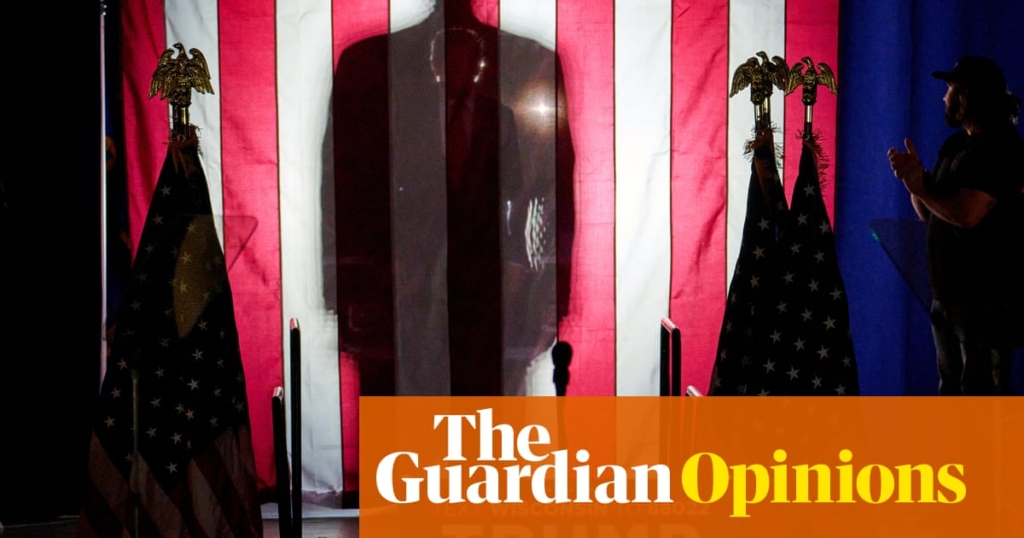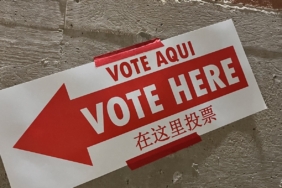Bu içerikte, Donald Trump’ın seçimi kazandığı ve şaşırtıcı bir şekilde popüler oyu da kazandığı belirtiliyor. 2016’dan farklı olarak, bu sefer Trump, her seferinde oy oranını artırarak kazandı. Trump’a kimlerin oy verdiği ve neden oy verdiği konusunda farklı analistlerin hazır açıklamaları olduğu, ancak genellikle bu açıklamaların sorgulamaya dayanamadığı belirtiliyor. Seçim sonuçlarının merkez ve sol görüşlerin dünya görüşlerine büyük bir darbe vurduğu vurgulanıyor. Trump’ın zaferinin arkasındaki nedenler ve seçim sonuçlarına ilişkin çeşitli açıklamalar ele alınıyor. Ayrıca, Demokrat Parti içindeki grupların seçim sonuçlarına ilişkin farklı anlatılarını şekillendirmeye çalıştığı ve Cumhuriyetçilerin daha koyu, otoriter bir şekilde toplumu yeniden şekillendirme iddialarında bulunduğu belirtiliyor. Ayrıca, Trump’ın ekonomiyi daha iyi yöneteceğine olan güven nedeniyle birçok kişinin ona oy verdiği, ancak bunun ardındaki daha karmaşık nedenlere de değiniliyor. Son olarak, çalışan sınıfı kurumlarının ve sivil toplumun yıkılmasının ve bireylerin daha bencil hale gelmesinin Trump’ın popülaritesini artırdığı ve toplumu yeniden inşa etmenin ve dayanışmacı bir siyaset için yeni örgütlenme biçimlerine ihtiyacın olduğu vurgulanıyor.
Kaynak: www.theguardian.com
Donald Trump has won, and most shockingly, he won the popular vote. Unlike in 2016, which could be explained as a rejection of Hillary Clinton concentrated in the crucial midwestern states, this year he won convincingly. He has increased his share of the vote, as a percentage of the overall national popular vote, in each of the three elections he has run.
Who voted for Trump and why? Many analysts of all political stripes have ready-made explanations for what happened, explanations that usually conveniently reflect the exact beliefs of the analyst. Unfortunately for them, the most common narratives do not stand up to scrutiny. The election results have blown a hole in the worldview of both the center and the left.
One explanation for Trump’s victory is an across-the-board collapse in turnout and increased apathy caused by an unpopular presidency, an uninspiring president and an ideologically spent brand of liberalism. There is some merit to this, but on closer inspection, it’s not why Kamala Harris lost.
First, it’s important to note that counting votes in the United States takes a very long time. By the time it’s all said and done, it’s quite likely Trump received more votes in 2024 than he did in the record turnout 2020 election, probably millions more votes.
The second flaw in this idea is that the turnout change wasn’t uniform, nor was the change in voting behavior. In most swing states, turnout was actually up from 2020, setting records. In the states that decided the election, Democrats got their base voters to the polls and had the electorate they needed to win (and even did win in many cases in the Senate and down the rest of the ballot). The problem was she lost on persuasion: many voters who chose Joe Biden four years ago and even voted for other Democrats this year chose Donald Trump. Even then, where Harris campaigned on the airwaves and on the ground, she held up better than she did nationwide.
However, problems with persuasion weren’t the only issue: Democratic turnout did, in fact, collapse in the less competitive states, especially in blue states. This is a unique shift in voting behavior nationally and can’t be explained obviously by most existing theories of the electorate.
Another explanation is that Democrats have become the party of college-educated voters exclusively, and shed working-class voters, especially working-class voters of color. There is some truth to this, especially over the long term. But this explanation is also flawed. Trump did better consistently with every demographic almost everywhere in the country, including college-educated white people and women. While these numbers were more pronounced with young voters, Latinos and men, it was only slight. Most highly-educated areas that had swung consistently against Republicans in 2016, 2018, 2020, and 2022 moved back toward Trump this year. His victory was not with any one demographic. It was total.
As with any massive election loss, recriminations have been swift, and factions inside the Democratic party are jockeying to make their narrative about the election the conventional wisdom that shapes the future of the party, while Republicans are claiming a sweeping mandate for reshaping society in a darker, more authoritarian way. However, conventional ideological explanations also don’t stand up to scrutiny.
One of the most common centrist takes has been: Democrats have become too progressive and “woke” on social issues and obsessed with identity politics, and Democratic staffers and consultants live in a bubble and speak in alienating ways that have made them seem radical and off-putting to the median voter. The solution is a relentless focus on bread-and-butter issues and moderating, mostly ignoring culture war issues, besides abortion, and aggressively playing up moderate and bipartisan bona fides.
It seems quite likely this narrative will win out among Democrats. It has already been expressed by elected officials and influential Democratic pundits. The key problem with this narrative is that while it may have had merit in 2020 or 2022, Democrats already actually did this. The Democratic party has, over the last few years, aggressively purged “woke”-sounding language from their messaging and policies from their agenda. The Harris campaign was almost monomaniacally focused on projecting moderation and bipartisanship and on basic, kitchen-table economic issues. They relentlessly hunted the median voter with targeted messaging. They ran the campaign the popularists wanted, and lost.
This theory is also belied by the fact that the most well-known progressive and radical politicians mostly did better than Harris. Rashida Tlaib performed significantly better, and while this was most pronounced with Arab and Muslim voters who rejected Harris over her stance on Israel and Gaza, it was even true in white working-class communities. Alexandria Ocasio-Cortez also won more votes than Harris. Understanding why thousands of people might vote for Trump and an avowed democratic socialist and vocal supporter of “woke” causes like trans rights is a key to understanding the election.
Progressives see the flaws with the centrist analysis and also have an explanation, typified by Bernie Sanders: Democrats lost by abandoning the working class and unions. Like the centrist narrative, it is an outdated explanation that was once true and may be true on a generational scale but is inadequate to capture what happened in this specific election fully. While Democrats have, over the last 50 years, shifted away from unions and redistributive politics, allowing inequality to grow, and this is the correct explanation for Clinton’s loss in 2016, it doesn’t quite fit here.
Joe Biden actually did shift to the left on economic issues after winning the primary in 2020, largely due to the mass movement that formed around the Sanders campaign. And while, in the past, this may have been lip service, the Biden administration, for all its shortcomings, did follow through in real, measurable ways. Income inequality, the central theme of the progressive movement in the 2010s, decreased under Biden. The poorest workers were better off. Biden also pursued aggressive pro-labor and pro-consumer policy through the executive branch. Biden was the first president to walk a picket line, and put political capital on the line to bail out union pension funds.
For many years, it was easy to explain why workers would leave the Democrats: they were making less money and losing rights. But, while the Biden administration should have been far more assertive in redistribution and class-war policy on ideological and moral grounds, it doesn’t stand up to scrutiny that workers moved right because of an ideologically neoliberal or austerity-focused policy. Though Democrats have mostly abandoned class as a mode of communication, and struggled to name an enemy and construct a compelling economic narrative, the material explanation for Harris losing votes among the working class and union members doesn’t hold as it may have in the past.
The right has its own explanation, seeing a sweeping mandate for the culture war. But Republican candidates who made their campaigns into referenda on culture war issues have uniformly lost or underperformed, in the past, and also this year. Trump is the only candidate who ran aggressively on the persecution of trans people, for example, and also did better than the partisan baseline.
And the idea that this is why voters flocked to Trump is just not compelling. Fifty-four percent of voters thought Trump was “too extreme”, 65% were pro-choice, and, even on immigration, 56% of voters supported a pathway to citizenship rather than mass deportations. Millions of voters voted for Trump at the top of the ticket and Democrats down-ballot to check his unpopular agenda. It would be a mistake to think Trump has a mandate to remake society in a hard-right, socially conservative image.
So why did people vote for Trump? Most voters still actively dislike him personally (53% of voters had an unfavorable opinion of him) and most of his policies. The obvious explanation is that people trust him more to handle the economy. Although voters didn’t like his presidency, they felt like they were better off four years ago. This is true, but also so obviously true as to be facile. More interesting is why, materially, voters trust him more to handle the economy.
The easy answer is inflation, but the case for this as the primary driver, materially rather than rhetorically, also has some holes. The first is that inflation has drastically decreased, and has been decreasing consistently since early in the Biden presidency. For most Americans, wages have risen faster than inflation, again for years in a row. When inflation was high and harming worker’s standard of living, Democrats were winning elections, historically over-performing in 2022 and sweeping special elections from the congressional level down to state legislatures and city councils.
Many have proposed the idea of a “vibes recession”, wherein traditional and social media have given people a false idea of their actual economic conditions. But this answer is glib: politics are material and people actually do know their conditions.
I propose a different explanation than inflation qua inflation: the Covid welfare state and its collapse. The massive, almost overnight expansion of the social safety net and its rapid, almost overnight rollback are materially one of the biggest policy changes in American history. For a brief period, and for the first time in history, Americans had a robust safety net: strong protections for workers and tenants, extremely generous unemployment benefits, rent control and direct cash transfers from the American government.
Despite the trauma and death of Covid and the isolation of lockdowns, from late 2020 to early 2021, Americans briefly experienced the freedom of social democracy. They had enough liquid money to plan long term and make spending decisions for their own pleasure rather than just to survive. They had the labor protections to look for the jobs they wanted rather than feel stuck in the jobs they had. At the end of Trump’s term, the American standard of living and the amount of economic security and freedom Americans had was higher than when it started, and, with the loss of this expanded welfare state, it was worse when Biden left office, despite his real policy wins for workers and unions. This is why voters view Trump as a better shepherd of the economy.
It’s important to note that Trump is resolutely not a social democrat, and these policies came into place during an emergency rather than due to ideological conviction. Indeed, he is currently running on the largest upward transfer of wealth in American history and Republicans’ Project 2025 would decimate the social safety net and immiserate millions. Beyond this, Biden wanted to continue many of these policies, but there wasn’t a political pathway. Instead, they quietly expired. To voters, however, the material reality is that when Trump left office, this safety net existed, and by the time of the 2024 election, it had evaporated.
How could Democrats have countered this? One way was by making it a central issue, fighting publicly and openly to keep these protections and messaging heavily and constantly that Republicans were taking them away while Biden fought for them. An enormous body of research has established that social programs, when implemented, are difficult and highly unpopular to take away. These were universal programs, beneficial at all income levels.
The political miscalculation the Biden administration made was that, lacking the political ability to implement these policies permanently, it was best to have them expire quietly and avoid the public backlash of gutting welfare programs and the black mark of taking a public political loss. This was a grave miscalculation.
Why were Democrats unable to counter the idea that Trump was an economic savant? And why did most Americans vote for someone they believe will harm the country but help their own pocketbooks? The answer is the ongoing decimation of working class institutions and civil society, started by neoliberalism, accelerated by the rise of the internet as a medium of interaction and put into overdrive during the isolation of Covid. The vehicles for building solidarity with others and for caring about strangers have been decimated. In crass terms, people have become more selfish.
Union membership, for example, still makes voters significantly more Democratic than would otherwise be expected based on demographics alone. Even this year, Harris won union members easily while losing the popular vote overall. Unions and civil society organizations also provide a baseline of political education: members know their interests and which policies will help or harm them. Without this, American’s views are shaped by the algorithm.
Perhaps most emblematic of this is at the heart of Trump’s campaign: his embrace of extremely online tech billionaires, crypto currency and online influencers. If the archetype of Trump’s win in 2016 was the left-behind post-industrial Rust belt manufacturing worker – or, perhaps more accurately, the car dealership or McDonald’s franchise owner in a left-behind post-industrial Rust belt town – this year it is the crypto scammer, the dropshipper, the app-based day trader, the online engagement farmer.
That embrace was Trump’s message, and at the core of his gains, especially with young men. Without civil society and without strong unions, people believe the only path to success is getting one over on someone else. And who is better at that than Trump?
While the core of the resurgent-left generation of Sanders was downwardly mobile college-educated professionals, selling their labor for wages without the prospect of buying a house or retiring on a pension, the second wave of newly aging-in Trump voters entered adulthood without even those prospects, hoping only to grind out a living through scams. But this is fundamentally an anti-social and anti-humanist mode of economic activity that contributes nothing to society and offers nothing but alienation to its victims. The result is people willing to vote for someone they know will cause immense harm to others, hoping it will help them personally.
While the new right has made great hay of returning to a communitarian model of politics, economically populist, socially conservative, and focused on family and society, the truth is that the Trumpist movement is the opposite. It is hostile to the very concept of society and community. To combat this, we need an unabashedly pro-society left.
The way to win back power for a solidaristic and humanist politics is to rebuild working-class democratic institutions. In 2020, Sanders asked the question: “Are you willing to fight for someone you don’t know?” This is the question we must ask over and over again and the work we must do is making sure the answer becomes yes.
It will be hard: the right knows that their kryptonite is organization and community, which is why they plan to launch relentless attacks on leftwing organizations and unions. We will need new forms of organization in an era of hyper-online and state repression. We must be nimble and resilient. But it is the only path forward. The first goal? Answer the United Auto Workers’ call that unions across the country align their contracts for 1 May 2028, maximizing the collective leverage of the working class and giving workers across the country a shared goal and collective solidarity.
In the meantime, we must rebuild organizations and unions, for a mass movement for solidaristic politics, for talking to your neighbors and coworkers, for fighting for someone you don’t know and for democracy itself. The story of 2024 was Americans voting for someone they know is a threat to democracy and for millions of people who are not like them because they were left worse off than they were for years before.
If that’s the story of 2028, the very fabric of the nation’s democracy might unravel. This must not happen.






Yorumlar kapalı.